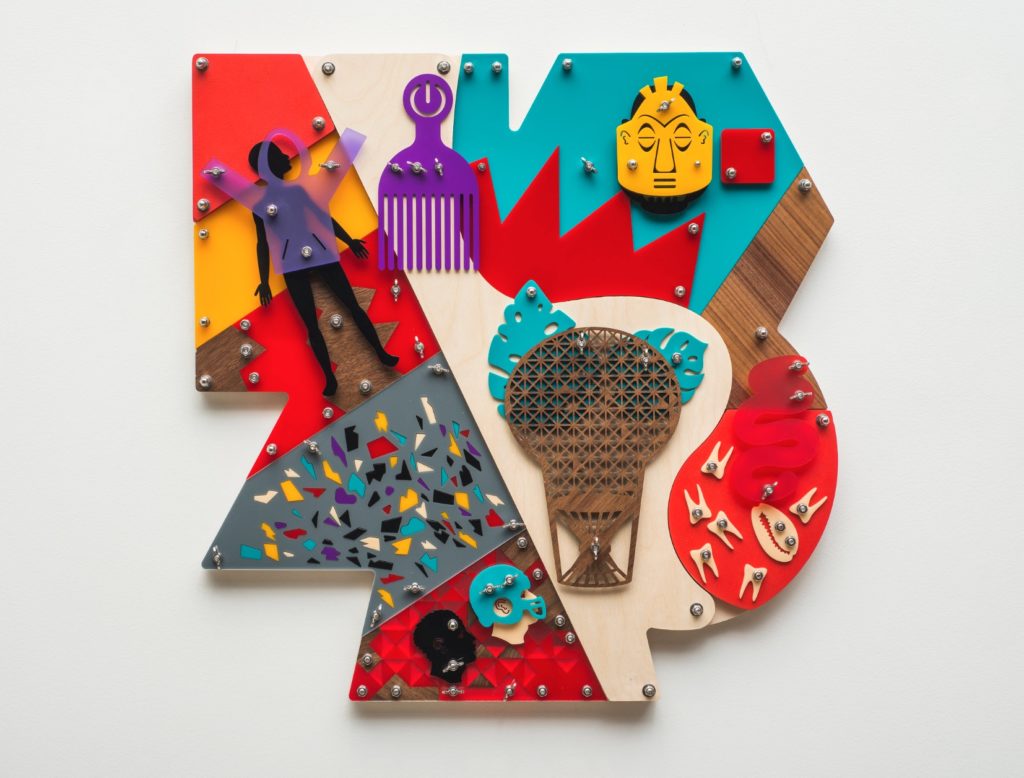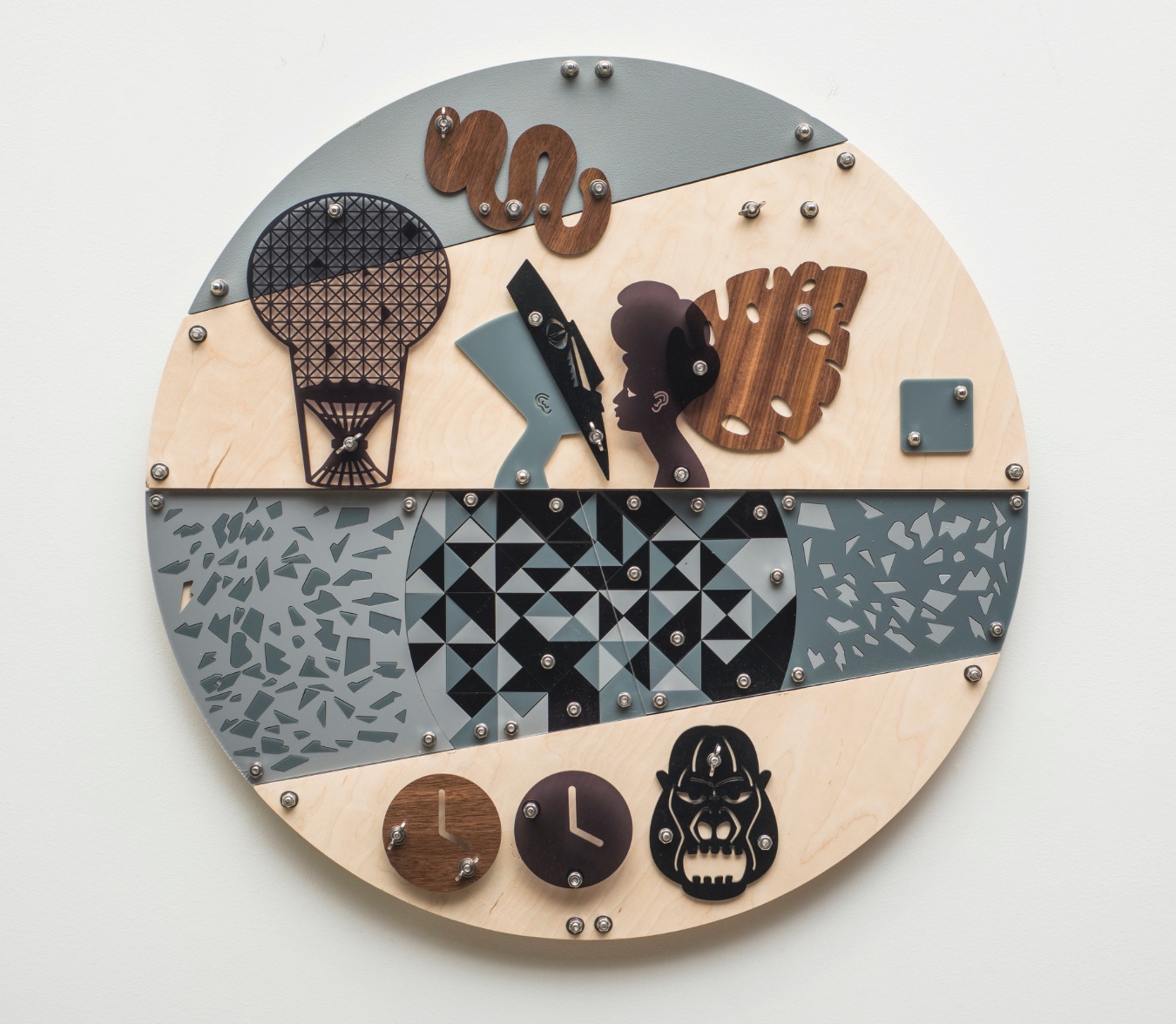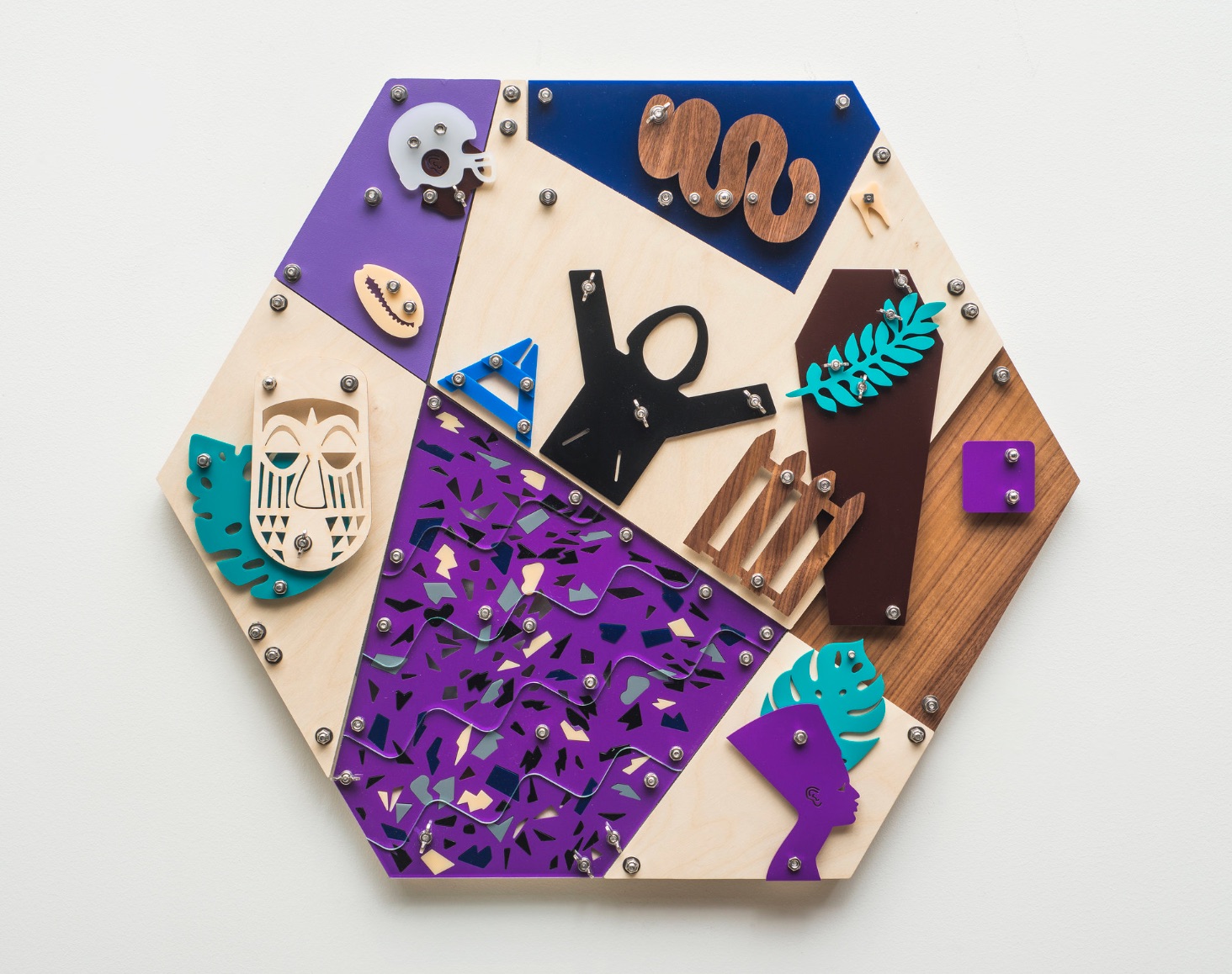
Damien Davis’s art resists labels, existing somewhere between sculpture, collage, painting, and printed media. “I like the idea that my work floats in these different genres,” he says. Using stainless steel hardware, he bolts together smooth, neon-hued plexiglass and roughhewn wood paneling—and in doing so, invites the viewer to identify meanings embedded within the materials themselves. What do we associate with bright pink, semi-translucent plexiglass? Or with wood? How do our preexisting biases shape what we see?
Davis began to explore visual semiotics during a recent artist residency in Chile, where he realized that one of the purposes of art is to encourage dialogue between cultures that do not share a common language. “Our understanding of imagery and the way in which we import meaning from images around us is informed,” he says, “by our lived experience—of both the person creating the images and the person processing the images.” Davis’s language of shapes presents a narrative of protest art, the African diaspora and black identity, thereby spurring discussions of how our preconceptions affect our initial interpretation of his art. “If the work is rooted in protest work—thinking about racism, thinking about identity, thinking about social justice—then you have to slow down the read,” he says. “It opens up a chance to have conversations that might otherwise be uncomfortable to people.”



